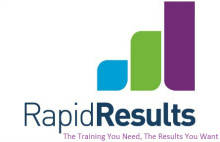Blog by Anna James
[dt_gap height=”10″ /]For most people, these brightly coloured blocks bring back nostalgic memories of childhood. For a few, perhaps a flashback to the unbearable pain of standing on a piece barefoot. Prior to last November Lego had honestly never really been my cup of tea (I was always more of a Barbie-doll child), but when the opportunity to attend a workshop where the sole focus of the day was playing with Lego came along, I thought this was a great chance to experience the opportunity cost of playing almost exclusively with Barbie dolls all through my childhood.
[dt_gap height=”10″ /]I had heard only a minimal amount about the course before I went on it. Admittedly, I was a bit sceptical. I had read the course was designed to improve communication and team-building skills. I could make the link but I wasn’t completely sold on the idea. I’ve never been overly fantastic at hands-on practical activities, so I was a bit nervous as well…but once the Lego was brought out and the day started I felt at total ease. I turned out to be very surprised at what I was able to build – and fascinated as well at how differently we all interpret and visualize problems.
[dt_gap height=”10″ /]The day started off quite easy – with everyone instructed to build a tower. It is a great warm up exercise as almost anyone can build a tower with Lego. There are no specifications – tall, short, wide, narrow…whatever kind of tower you like. From there, the day progressed to more complex models based on more abstract ideas. I won’t give away any spoilers, but I definitely found that the more you build the more you want to keep building. As soon as you pick up the first block and start moving your hands around, even if you have no idea what you’re intending to build, it somehow all comes together and you end up with a model you can quite easily explain.
[dt_gap height=”10″ /]In groups we were instructed to discuss the models we had built and explain how our model represented the particular idea we had been asked to construct. Personally, something I have always faced is quiet student syndrome. I have consistently been the quiet one in the class. It didn’t mean I wasn’t engaged or enjoying myself, but I was always naturally one of the less talkative ones. A major advantage I found on the course was that I had no qualms in speaking up. In fact, quite the opposite. I wanted to talk more because I had something to talk about with my model. I found that listening to others explaining their models inspired me to talk about every detail on mine – down to the last flower. It is a markedly different experience when you have something tangible to talk about, and at the same time people find it much easier to discuss and divulge any workplace problems they may be experiencing when they have something concrete to represent it.
[dt_gap height=”10″ /]By the end of the session, it had felt like a productive day for a myriad of reasons;
[dt_gap height=”10″ /]
- I had, for the first time, overcome my quiet student syndrome. This course actually got me talking quite a bit – a wow factor on its own. Most workplaces have those quiet people, and this course is a fantastic opportunity to hear their opinions and give them the confidence to speak up.
- The group felt like a team. Bearing in mind that my experience of Lego was on a public course so none of us knew each other before the day. To go from strangers to a team is quite a feat for one day of playing with Lego!
- I learned that I was actually much better with Lego than I had previously thought…which absolutely gave me creative confidence
- I discovered that talking in a group is far easier when you have something to talk to or about. I have been able to practise this since the course and haven’t questioned its validity once!
[dt_gap height=”10″ /]Another one of the key benefits of using Lego in training is it encourages everyone to participate, and is based around the idea that leaders may not always have all the answers. Through encouraging participation of every member of the group, the leadership role is essentially forgotten. Every participant has equal input, and an equal chance to share their ideas. Your team will come away with stronger communication, problem-solving and creative thinking skills as there is no one person dominating throughout the day – as can happen with many training courses.
[dt_gap height=”10″ /]Attending the Lego course has been one of the highlights of my time so far at Rapid Results – and I thoroughly recommend it for anyone after training with a difference! I have experienced the benefits in bucket loads – so sign up and give it a go! June 27th 2016 at the Rose Park Hotel in Auckland is our next public course, but we can also provide this training in-house so you can see the difference within your whole team. E-mail me on anna@rapidresults.co.nz if you would like any more information or would like to sign up. Get ready for a training course experience like no other!

Recent Comments